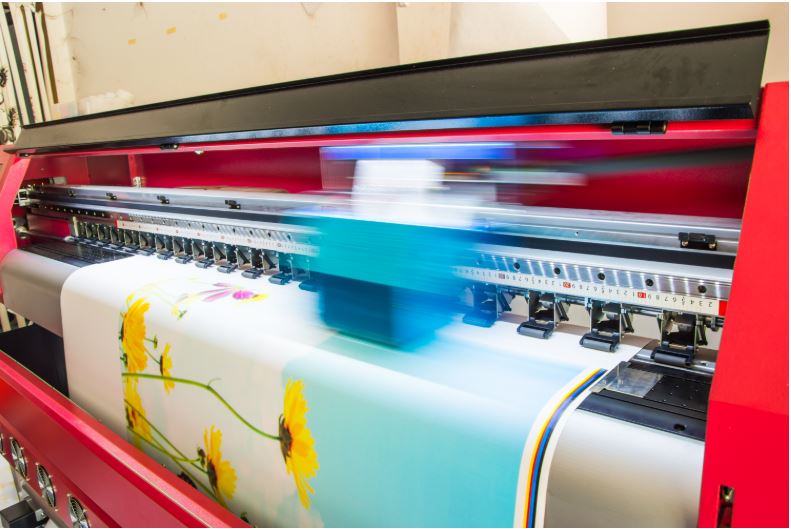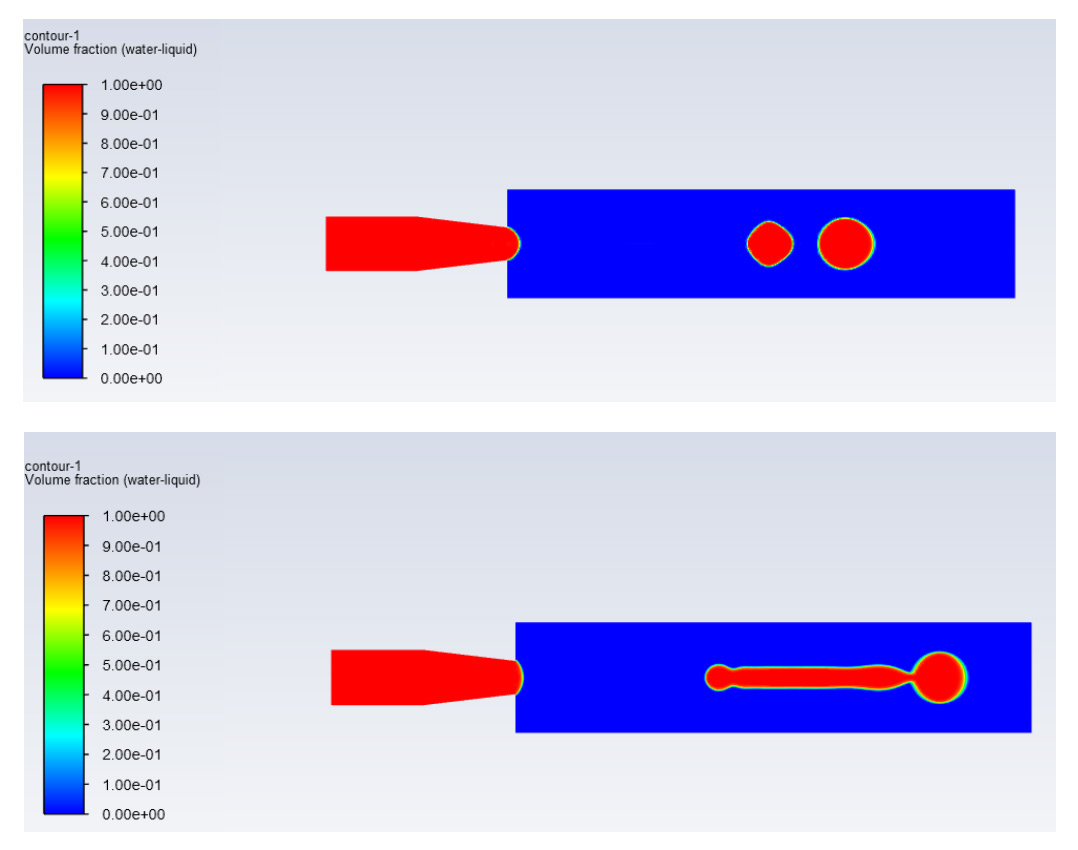Fluid Dynamics in Inkjet: Applications in Digital Printing
Wide Format Inket Printer
With the School of Media Science’s recent move to the College of Engineering Technology (CET), the faculty is beginning to incorporate more science into their classes. Robert Eller, the Gravure Research Professor, is among the faculty members leading the charge in this area. One example is the introduction of Fluid Dynamics in the inkjet printing lab of his Digital Print Processes course.
On its own, inkjet is an array of nozzles that jet out ink onto a substrate. A driver is used to tell the nozzles when to jet ink. In Drop On Demand (DOD) inkjet, an ink chamber is filled with ink, the droplets are formed at the nozzle, and those droplets are jetted out by pressure in the ink chamber. There are two types of DOD inkjet technologies, thermal and piezoelectric. Thermal inkjet creates pressure via a resistance heater that creates a gas bubble. Piezoelectric inkjet uses a piezoelectric actuator.
The purpose of this lab was to dive deeper into the science of how ink is jetted out of an inkjet nozzle. According to Professor Eller, he wanted his students to gain a better understanding of the forces that shape inkjet droplets as they are being jetted. The Fluid Dynamics lab built on the Properties of Inkjet Inks lab where viscosity, surface tension, and surface energy were demonstrated.
To put this into a better perspective, Eller went on to discuss the Navier-Stokes equations. Eller states “This equation describes the forces that are acting on an infinitesimally small volume of liquid in an ink stream, and the way these forces change its rate and direction of motion”. The equation for motion in the x direction is as follows:
Figure 1. Navier-Stokes Equation
The left side of this equation shows the forces acting on the volume: gravity, pressure, and viscosity. The right side shows the change in motion resulting from the forces on the left side. The forces on the left side of the equation result in two types of acceleration. Local acceleration results from local forces acting specifically on the volume, while the convective acceleration is associated with the bulk motion of the fluid.
Once the class was able to understand this equation, Professor Eller was ready to take the discussion one step further. Using these equations, he used software in order to visualize droplet formation. In this lab, Eller used a program called ANSYS Fluent to demonstrate how the properties on inkjet inks affect droplet formation.
During lab, Professor Eller simulated droplet formation using two different fluids: pure water and a typical inkjet ink. These simulations can be seen below. The top simulation shows water and the bottom shows inkjet ink.
Figure 2. ANSYS Fluent Simulations of Water (top) and Inkjet Ink (bottom)
It is clear from the image above that the droplets formed by these fluids do not match. When Professor Eller asked the class what property was changed to model actual inkjet ink, 100% of the class was able to correctly answer “surface tension”. Water has a surface tension of 73 dyne/cm and the ink has a surface tension of 30 dyne/cm. By lowering the surface tension, the molecules at the surface of the fluid are less attracted to the inside of the droplet, therefore reducing the tendency of the fluid to neck in and from multiple droplets.
The School of Media Sciences is making science an increasingly important component of its Bachelor of Science and Masters of Science curricula. The Fluid Dynamics Lab is only one example of the way collaboration with College of Engineering Technology faculty is allowing the School to enrich its course offerings, emphasize critical thinking, and prepare the next generation of leaders in the Graphic Communication Industry.









